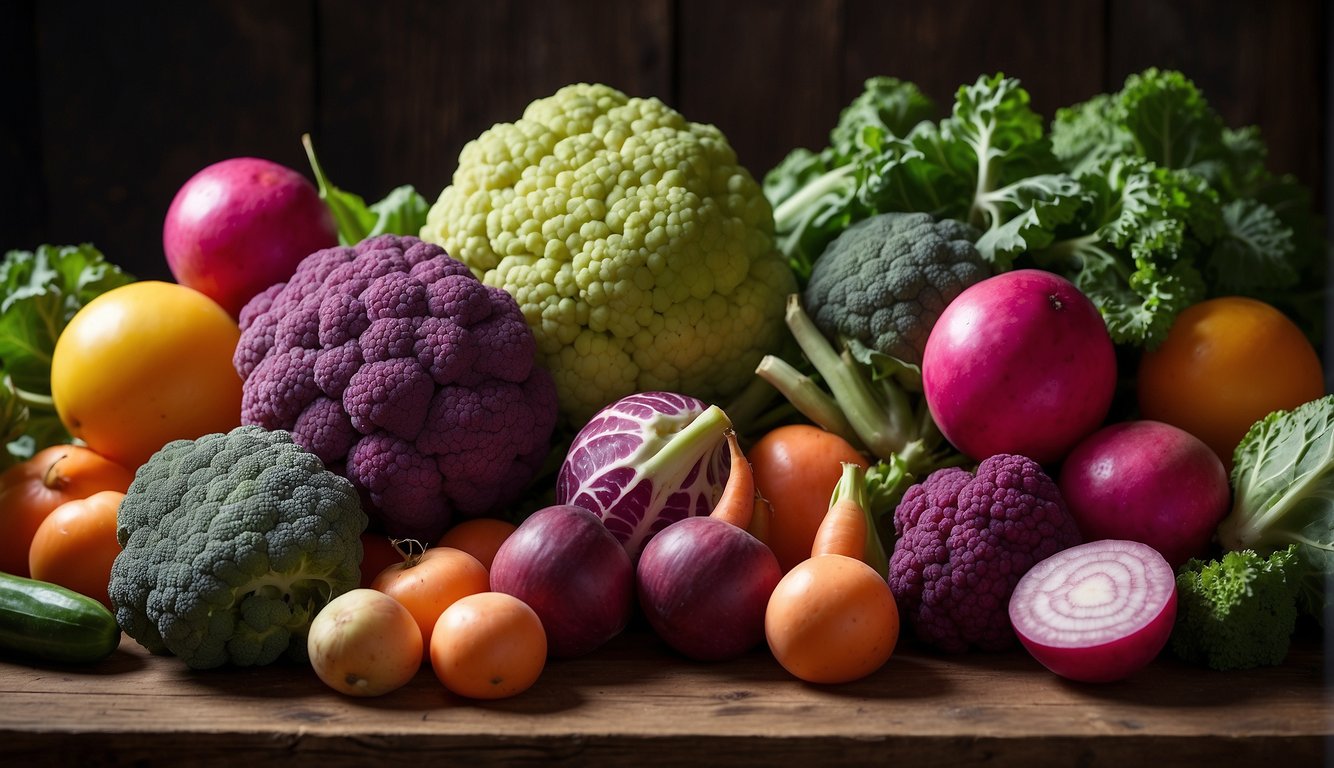TheHerbProf.com is a treasure trove of knowledge for those interested in natural healing and herbal remedies. The website is run by Paul Johnston MD. A naturopathic who has not only received extensive education in the field but also has personal experience in self-healing.
As someone who is passionate about food and cooking, I am always on the lookout for new and exciting ingredients to experiment with. One of my favorite ways to add variety to my meals is by incorporating rare vegetables list into my recipes. Not only do these unique vegetables offer a new flavor profile, but they also provide a fun challenge in the kitchen as I figure out how to best prepare them.
If you’re looking to expand your culinary horizons, then a rare vegetables list is a great place to start. From the exotic and unusual to the lesser-known varieties of more common vegetables, there is a wide range of options to choose from. Whether you want to grow your own or seek them out at specialty markets, incorporating rare vegetables into your diet is a great way to add some excitement to your meals.
In this article, I will explore some of the most interesting and delicious rare vegetables out there. I’ll provide information on where to find them, how to prepare them, and what makes them so special. Whether you’re a seasoned chef or a home cook looking to try something new, this rare vegetables list is sure to inspire you to get creative in the kitchen.
Understanding Rare Vegetables
As a vegetable enthusiast, I am always on the lookout for new and exciting produce to add to my meals. Rare vegetables, also known as uncommon or exotic vegetables, are a great way to add variety to your diet. In this section, I will discuss what defines a rare vegetable, their nutritional profile, and their global distribution.
Defining Rarity in Vegetables
The term “rare vegetables” can be subjective as it depends on factors such as location, availability, and cultural significance. However, in general, rare vegetables are those that are not commonly consumed or grown in a particular region. For example, celeriac, also known as celery root, is a rare vegetable in the United States but is a common ingredient in European cuisine.
Nutritional Profile of Uncommon Produce
Rare vegetables can offer unique nutritional benefits. Many of them are rich in vitamins, minerals, fiber, and antioxidants. For instance, the Tumaticot Pepper, which is native to Italy, is a rare vegetable that is rich in vitamin C and antioxidants. Similarly, the Snake Gourd, which is commonly consumed in Southeast Asia and India, is a good source of fiber and vitamin C.
Global Distribution of Rare Vegetables
Rare vegetables are often associated with specific regions and cultures. For example, the Yacón, a sweet-tasting root vegetable, is native to the Andes region of South America. The Banana Melon, which has a flavor similar to that of a banana, is grown in Mexico, Cuba, and the southern United States. The Dipper Gourd, which is used as a ladle in some cultures, is grown in Asia and Africa.
Rare vegetables are a great way to add variety to your diet and explore new flavors. They offer unique nutritional benefits and are often associated with specific regions and cultures. By incorporating rare vegetables into your meals, you can expand your palate and gain a deeper understanding of different cuisines around the world.
Rare Root Vegetables
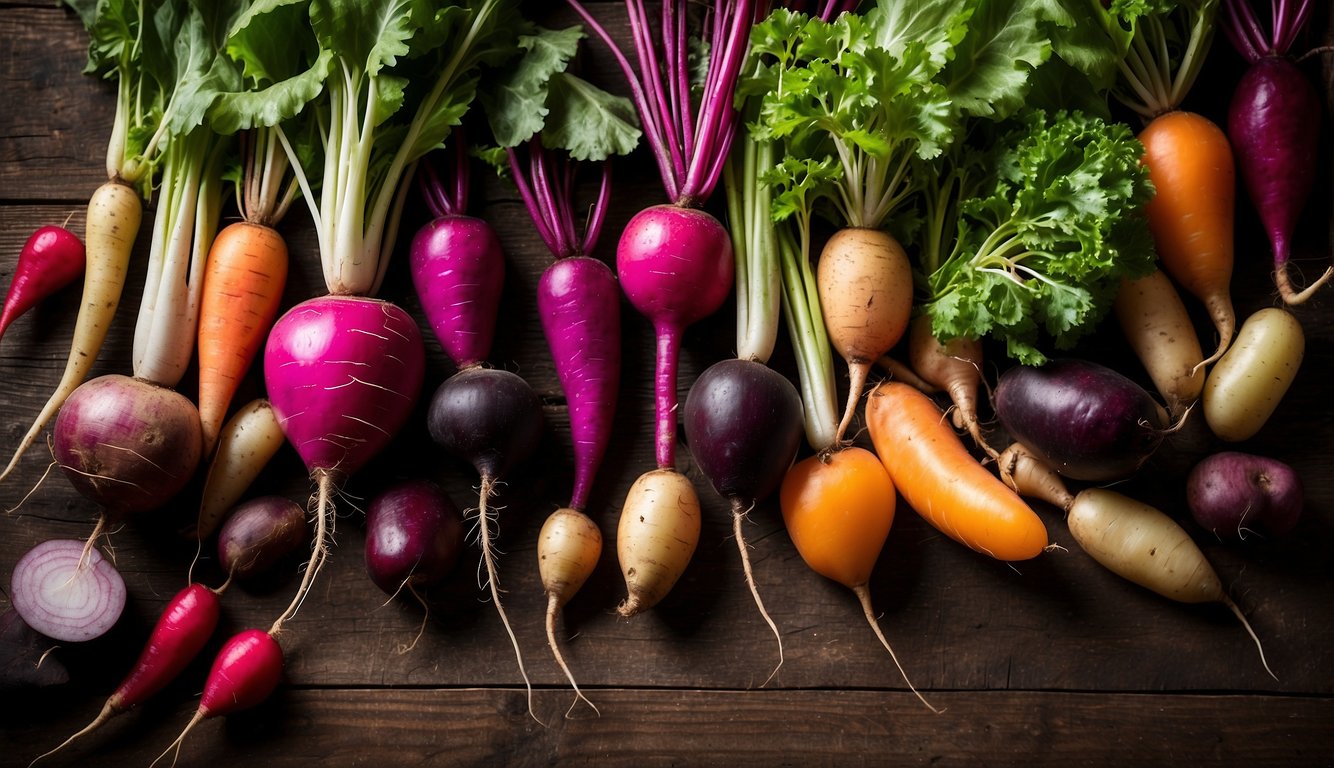
As a food enthusiast, I have always been fascinated by the vast variety of vegetables that exist in the world. While we all know about the ubiquitous potato, carrots, and turnips, there are many other root vegetables that are not as well-known but equally delicious and nutritious. In this section, I will explore some of the rare root vegetables that are worth exploring.
Exploring Tubers Beyond Potatoes
When we think of tubers, the first vegetable that comes to mind is the potato. However, there are many other tubers that are worth exploring. One such vegetable is the Oca. Oca is a sweet and tangy tuber that is native to the Andes and is known for its vibrant colors. It is a great source of carbohydrates and is a good alternative to potatoes.
Another tuber that is worth exploring is the Jicama. Jicama is a crunchy and slightly sweet root vegetable that is native to Mexico. It is low in calories and high in fiber, making it a great addition to any diet. Jicama is also a good source of vitamin C, which is essential for a healthy immune system.
Unique Qualities of Exotic Root Crops
Moving on to exotic root crops, one such vegetable is the Salsify. Salsify is a root vegetable that is native to Europe and is known for its white flesh and delicate flavor. It is a good source of carbohydrates and is often used in soups and stews.
Another exotic root crop worth exploring is the Yam. Yams are starchy root vegetables that are native to Africa and Asia. They are a good source of carbohydrates and are often used in sweet dishes. Yams are also a good source of vitamin C, which is essential for a healthy immune system.
There are many rare root vegetables that are worth exploring beyond the ubiquitous potato. From the sweet Oca to the crunchy Jicama, there are many exotic root crops that offer unique qualities and flavors. So, the next time you are at the grocery store, don’t be afraid to try something new and exciting!
Unusual Leafy Greens and Stems
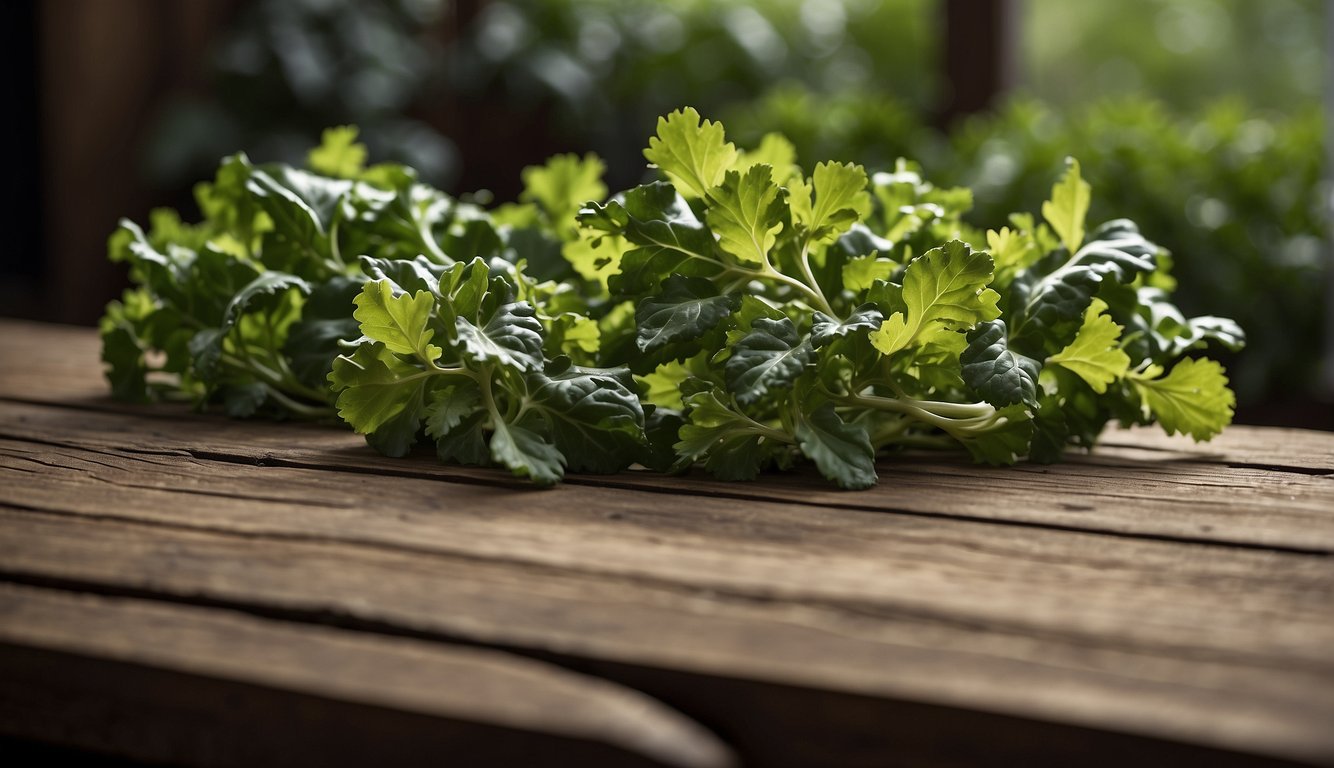
As a vegetable enthusiast, I’m always on the lookout for new and exciting greens to add to my garden and meals. In this section, I’ll introduce you to some unusual leafy greens and stems that are worth trying.
Leafy Vegetables with Distinct Flavors
If you’re tired of the same old spinach and kale, consider trying some of these leafy greens with unique flavors:
- Nopal: Also known as prickly pear cactus, nopal has a tangy, slightly sour flavor and a crisp texture. It’s commonly used in Mexican cuisine and can be eaten raw or cooked. Nopal is also packed with nutrients, including fiber, vitamin C, and magnesium.
- Fiddleheads: These young, coiled fern fronds have a delicate, nutty flavor and a crunchy texture. They’re a seasonal delicacy in many parts of the world and can be sautéed, roasted, or pickled. Fiddleheads are also a good source of antioxidants and omega-3 fatty acids.
Stems and Shoots Worth Trying
Don’t overlook the stems and shoots of certain vegetables – they can be just as tasty and nutritious as the leaves! Here are a few worth trying:
- Celeriac: This root vegetable is related to celery and has a mild, nutty flavor. Its stems and leaves can be used in soups and stews, while its bulbous root can be roasted or mashed like potatoes. Celeriac is also a good source of fiber, vitamin C, and potassium.
- Celery: While celery is often used as a garnish or snack, its stems and leaves can also be used in cooking. They have a mild, slightly bitter flavor and can be added to salads, stir-fries, and soups. Celery is also low in calories and high in fiber.
There are many unusual leafy greens and stems out there that are worth trying. Not only do they add variety to your meals, but they also provide a range of nutrients and flavors. So next time you’re at the grocery store or farmer’s market, keep an eye out for these unique vegetables!
Exotic Fruits as Vegetables
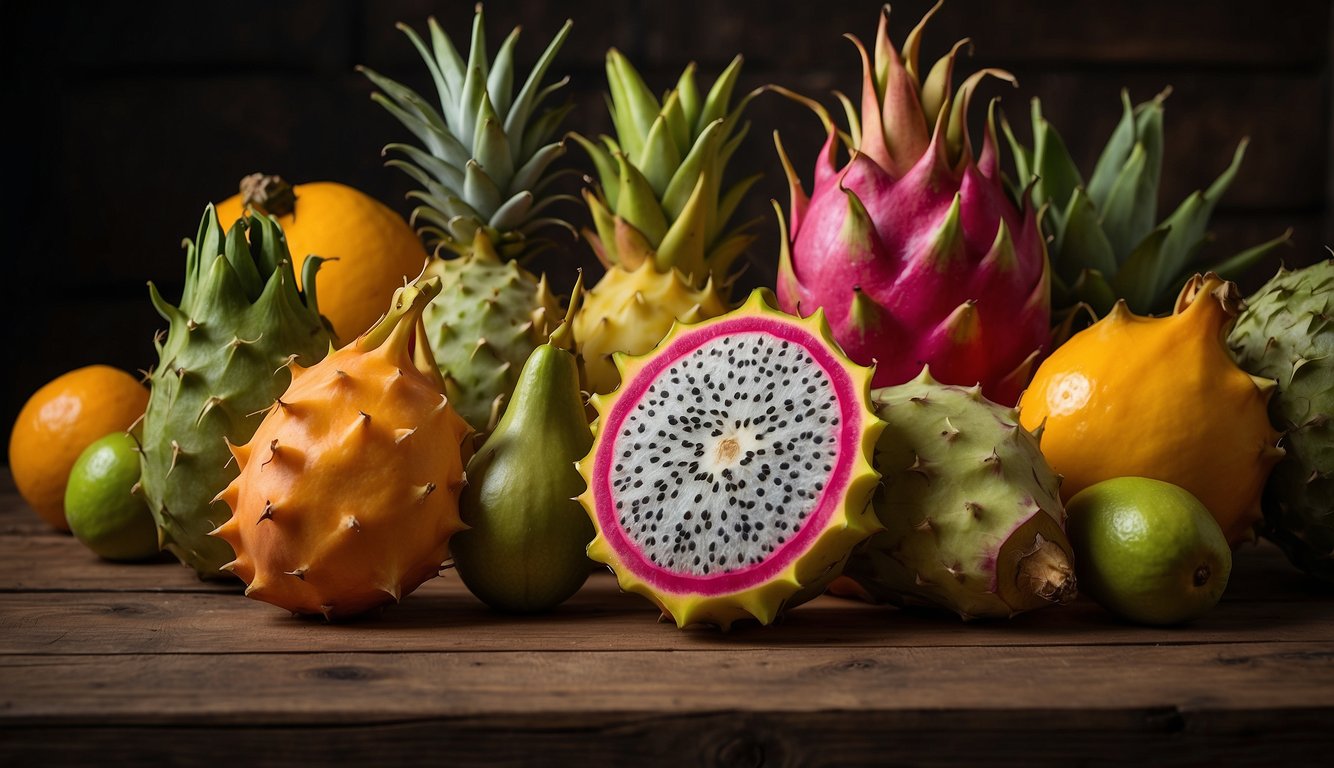
As a gardener, I am always on the lookout for unique and rare vegetables to add to my garden. However, sometimes the line between fruits and vegetables can become blurred, especially when it comes to exotic fruits. In this section, I will explore some fruits that can be used as vegetables in your garden and kitchen.
Squashes and Gourds – Rare Vegetables List
Squashes and gourds are some of the most versatile vegetables that can be used in both sweet and savory dishes. One such example is the Chayote Squash. It is a pear-shaped fruit that is commonly used in Latin American cuisine. It can be eaten raw or cooked and has a mild flavor that is similar to a cucumber. Another exotic fruit that can be used as a vegetable is the Bottle Gourd. It is a long, cylindrical fruit that is commonly used in Indian cuisine. It has a mild flavor and a slightly spongy texture that makes it perfect for soups and stews.
Tomatoes and Peppers Varieties
Tomatoes and peppers are some of the most commonly grown fruits that can also be used as vegetables. One such example is the Tomatillo. It is a small, green fruit that is commonly used in Mexican cuisine. It has a tart flavor that is perfect for salsas and sauces. Another exotic fruit that can be used as a vegetable is the Sweet Pepper. It is a small, sweet fruit that is commonly used in Mediterranean cuisine. It has a mild flavor and a crisp texture that makes it perfect for salads and stir-fries.
There are many exotic fruits that can be used as vegetables in your garden and kitchen. Squashes and gourds, as well as tomatoes and peppers, are just a few examples of fruits that can be used in both sweet and savory dishes. So, the next time you are at the farmer’s market or grocery store, don’t be afraid to try something new and exotic.
Cultivation and Cooking – Rare Vegetables List
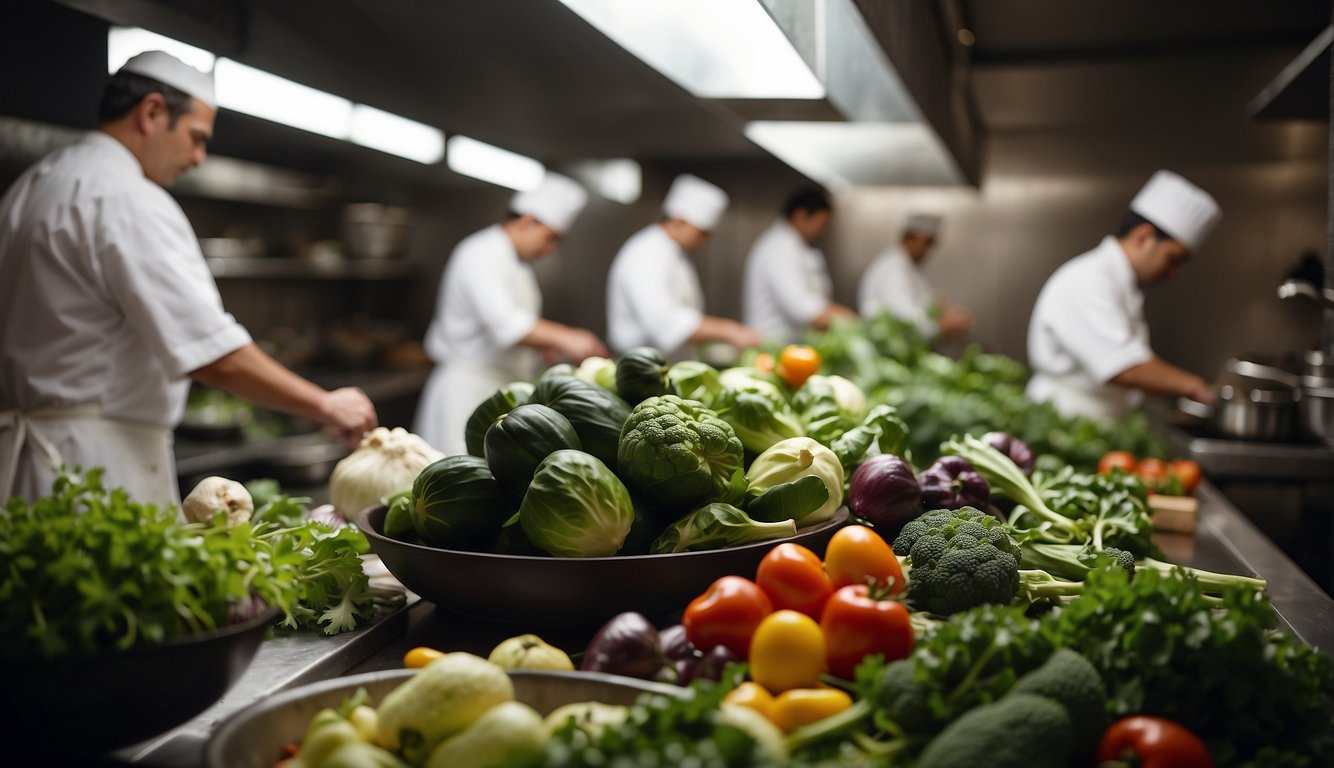
Growing Uncommon Vegetables at Home – Rare Vegetables List
When it comes to growing rare vegetables, it’s important to choose the right variety for your climate and soil type. Some uncommon vegetables like celeriac and kohlrabi are cold-hardy and can thrive in cooler temperatures, while others like goji berries and kiwano jelly melons require warmer climates. Before planting, do some research on the specific needs of each vegetable to ensure a successful harvest.
In terms of cultivation, many rare vegetables can be grown in containers or raised beds. This can be especially useful for those with limited space or poor soil quality. When planting, be sure to use high-quality soil and provide adequate drainage. Some uncommon vegetables like rat’s tail radishes and yard-long beans may require trellises or stakes for support.
Preparing and Cooking Rare Vegetables
Once you’ve harvested your rare vegetables, it’s time to start preparing and cooking them. Many rare vegetables can be eaten raw, such as goji berries and white eggplant, making them great additions to salads. Others like celeriac and kohlrabi can be mashed or pureed for a unique twist on traditional mashed potatoes.
For those who prefer cooked vegetables, rare vegetables can be roasted, boiled, or stir-fried. Winged beans and painted hill corn can be grilled or roasted for a smoky flavor, while kohlrabi and celeriac can be boiled and mashed for a creamy texture. Some rare vegetables like shetland cabbage/kale can be pickled for a tangy and flavorful side dish.
Growing and cooking rare vegetables can be a fun and rewarding experience. By choosing the right variety for your climate and soil type, and experimenting with different cooking methods, you can add a unique twist to your meals and impress your dinner guests.
Regional Specialties – Rare Vegetables List
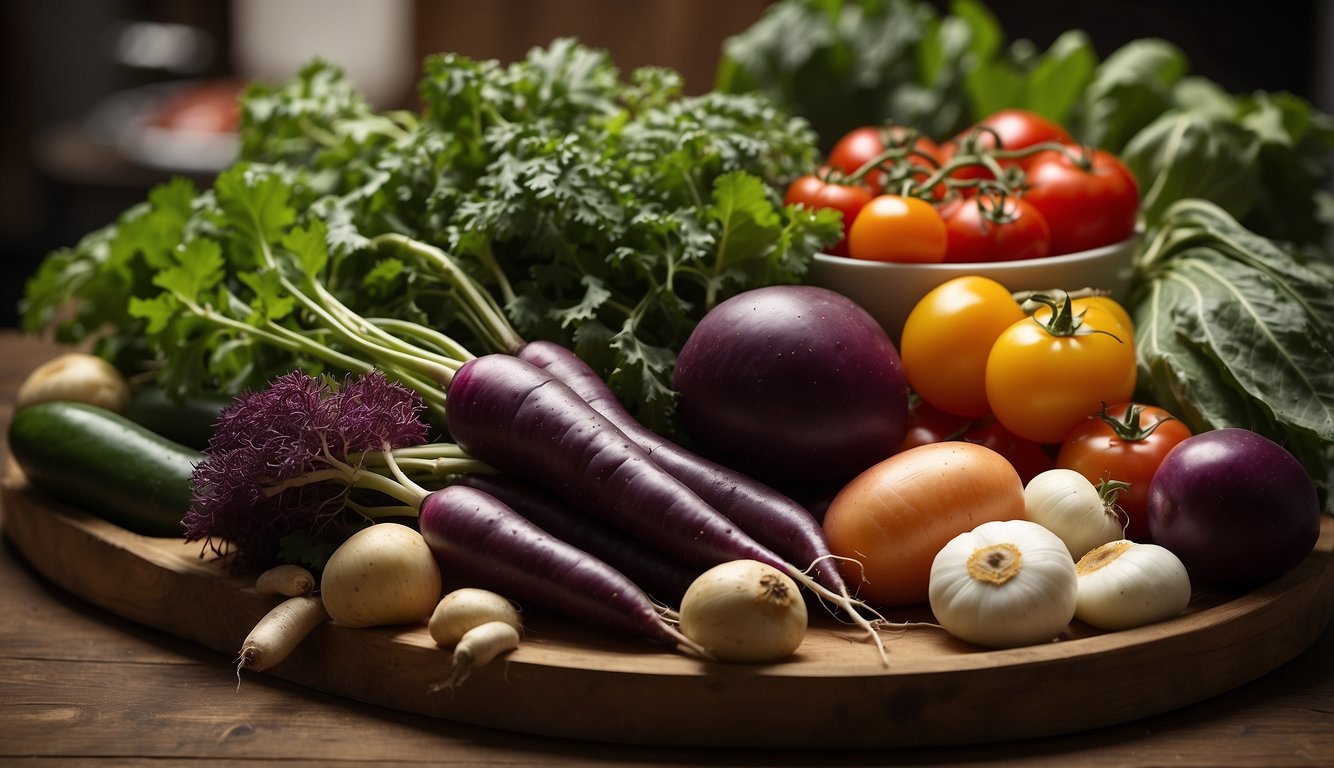
As a gardening enthusiast, I love to explore the diversity of vegetables that different regions of the world have to offer. In this section, I will present some of the rare and exotic vegetables that are native to different regions of the world.
Vegetables Native to the Americas
The Americas have a rich heritage of indigenous vegetables that have been cultivated for centuries. Some of the rare and lesser-known vegetables include:
- Oca (Oxalis tuberosa): A tuberous vegetable that is native to the Andes. It has a tangy, lemony flavor and is rich in vitamin C.
- Chayote (Sechium edule): A pear-shaped vegetable that is native to Mexico. It has a mild, slightly sweet flavor and can be eaten raw or cooked.
- Jerusalem artichoke (Helianthus tuberosus): A tuberous vegetable that is native to North America. It has a nutty, sweet flavor and is a good source of iron and potassium.
African Indigenous Vegetables
Africa has a diverse range of indigenous vegetables that are rich in nutrients and flavor. Some of the rare and lesser-known vegetables include:
- Amaranth (Amaranthus spp.): A leafy vegetable that is native to Africa. It has a slightly sweet, nutty flavor and is rich in iron and calcium.
- Jute (Corchorus spp.): A leafy vegetable that is native to Africa. It has a slightly bitter, nutty flavor and is rich in vitamin C and fiber.
- Okra (Abelmoschus esculentus): A vegetable that is native to Africa. It has a mild, slightly sweet flavor and is rich in vitamin C and fiber.
Asian and Oceanian Varieties
Asia and Oceania have a rich heritage of exotic vegetables that are not commonly found in other parts of the world. Some of the rare and lesser-known vegetables include:
- Bitter melon (Momordica charantia): A vegetable that is native to Southeast Asia. It has a bitter flavor and is rich in vitamin C and antioxidants.
- Taro (Colocasia esculenta): A root vegetable that is native to Southeast Asia and the Pacific Islands. It has a starchy, nutty flavor and is rich in fiber and potassium.
- Winged bean (Psophocarpus tetragonolobus): A legume that is native to Southeast Asia. It has a nutty, slightly sweet flavor and is rich in protein and fiber.
European Delicacies
Europe has a rich heritage of rare and exotic vegetables that are not commonly found in other parts of the world. Some of the rare and lesser-known vegetables include:
- Cardoon (Cynara cardunculus): A vegetable that is native to the Mediterranean region. It has a slightly bitter, nutty flavor and is rich in fiber and antioxidants.
- Black salsify (Scorzonera hispanica): A root vegetable that is native to Europe. It has a nutty, slightly sweet flavor and is rich in fiber and iron.
- Romanesco (Brassica oleracea var. botrytis): A vegetable that is native to Italy. It has a nutty, slightly sweet flavor and is rich in vitamin C and fiber.
As you can see, each region of the world has its unique set of rare and exotic vegetables that are not commonly found in other parts of the world. By exploring these vegetables, we can broaden our culinary horizons and discover new flavors and textures.
Health and Dietary Benefits
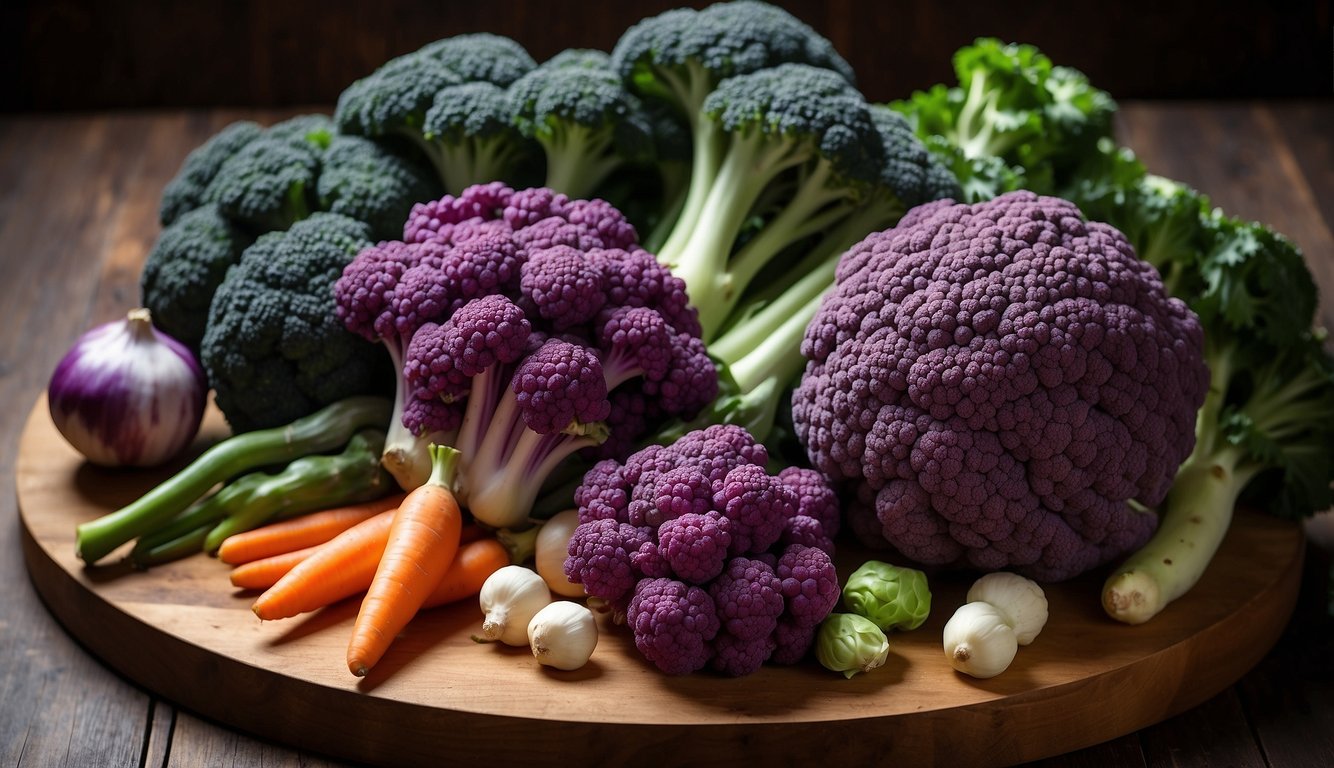
As a lover of rare vegetables, I am always on the lookout for new and exciting ways to incorporate them into my diet. Not only are they delicious, but they also offer a range of health benefits that make them a great addition to any meal.
Vegetables as a Source of Vitamins and Minerals – Rare Vegetables List
One of the primary benefits of rare vegetables is that they are an excellent source of vitamins and minerals. For example, many nutty and bitter vegetables like kale and collard greens are rich in vitamin C, which is essential for maintaining a healthy immune system.
Iron is another important nutrient that can be found in many rare vegetables. For those who are looking to increase their iron intake, vegetables like spinach and Swiss chard are great options.
Potassium is also abundant in many rare vegetables, which is important for maintaining healthy blood pressure and heart function. Vegetables like sweet potatoes and beets are particularly high in potassium.
Dietary Fiber and Antioxidant-Rich Veggies
In addition to vitamins and minerals, rare vegetables are also a great source of dietary fiber and antioxidants. These nutrients are important for maintaining a healthy digestive system and reducing the risk of chronic diseases like cancer and heart disease.
Many rare vegetables have a mild or sweeter taste, making them an excellent addition to salads or as a side dish. Vegetables like jicama and kohlrabi are particularly crisp and refreshing, making them a great option for snacking.
Overall, incorporating rare vegetables into your diet is an excellent way to improve your overall health and nutrition. Whether you are looking for a nutty, bitter, or sweeter option, there is sure to be a rare vegetable that fits your taste preferences and dietary needs.
Conservation and Sustainability – Rare Vegetables List
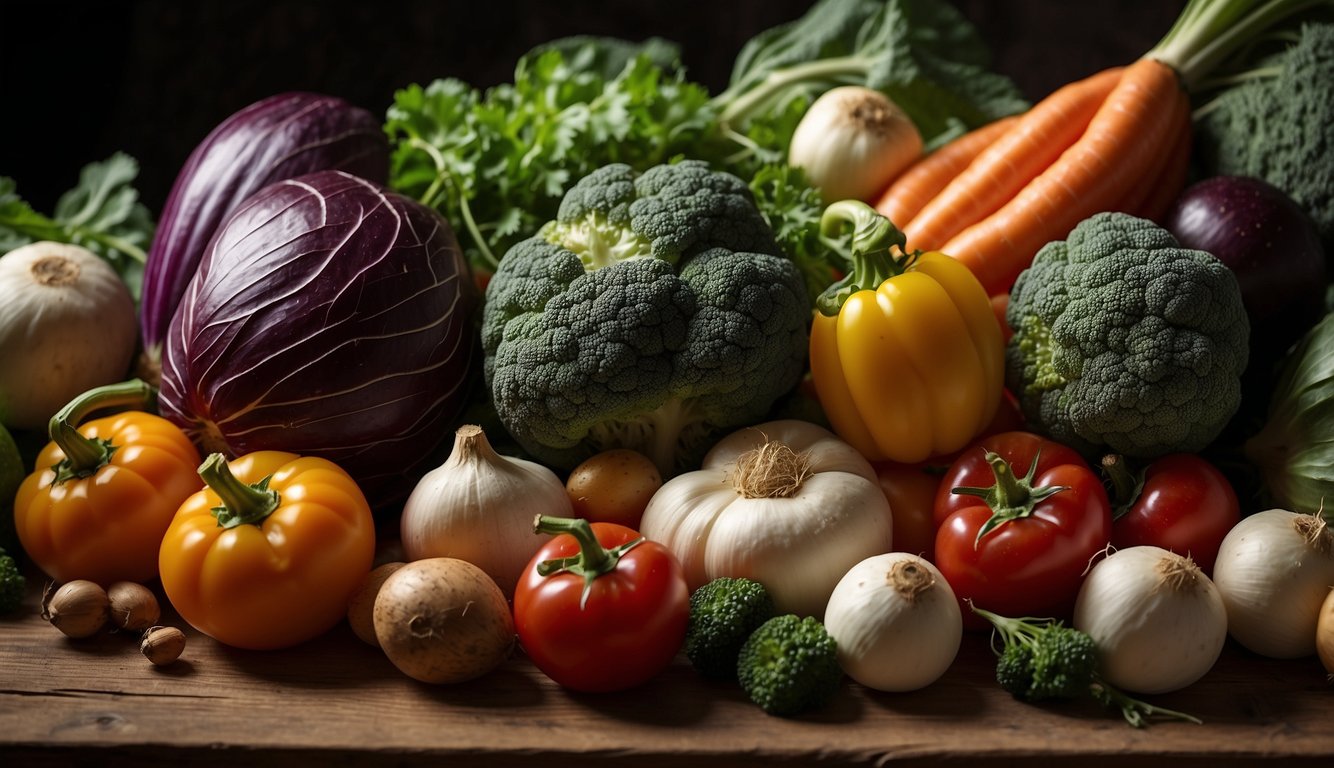
Promoting Diversity in Agriculture – Rare Vegetables List
As a gardener, I believe in promoting diversity in agriculture. Growing rare and unusual vegetables not only adds excitement and variety to my garden but also helps to preserve the diversity of our food system. Many of these vegetables are annuals, meaning that they need to be replanted each year. By growing these vegetables, I am helping to ensure that they remain a part of our food system for future generations.
In addition to promoting diversity in agriculture, growing rare and unusual vegetables can also be a way to support small-scale farmers. Many of these farmers specialize in growing alternative vegetables and rely on a market of adventurous eaters to sustain their business. By seeking out and purchasing these vegetables, I am supporting sustainable farming practices and helping to create a more resilient food system.
Sustainable Practices for Rare Vegetables
When it comes to growing rare and unusual vegetables, it is important to use sustainable practices. Many of these vegetables are not as well-known as their more common counterparts and may require different growing conditions. It is important to research the specific needs of each vegetable and to use organic and sustainable growing practices to ensure their success.
One way to promote sustainability in the garden is to use companion planting. This practice involves planting different vegetables together that complement each other and provide mutual benefits. For example, planting beans with corn can help to fix nitrogen in the soil and improve the overall health of the garden.
Another way to promote sustainability is to use natural pest control methods. By avoiding the use of harmful chemicals, I can help to create a healthier and more sustainable growing environment. This can include using beneficial insects, such as ladybugs and lacewings, to control pests or using organic sprays made from natural ingredients.
Overall, growing rare and unusual vegetables can be a fun and rewarding way to promote diversity and sustainability in the garden. By using sustainable practices and supporting small-scale farmers, I can help to create a more resilient and healthy food system for future generations.
Innovative Uses and Recipes – Rare Vegetables List
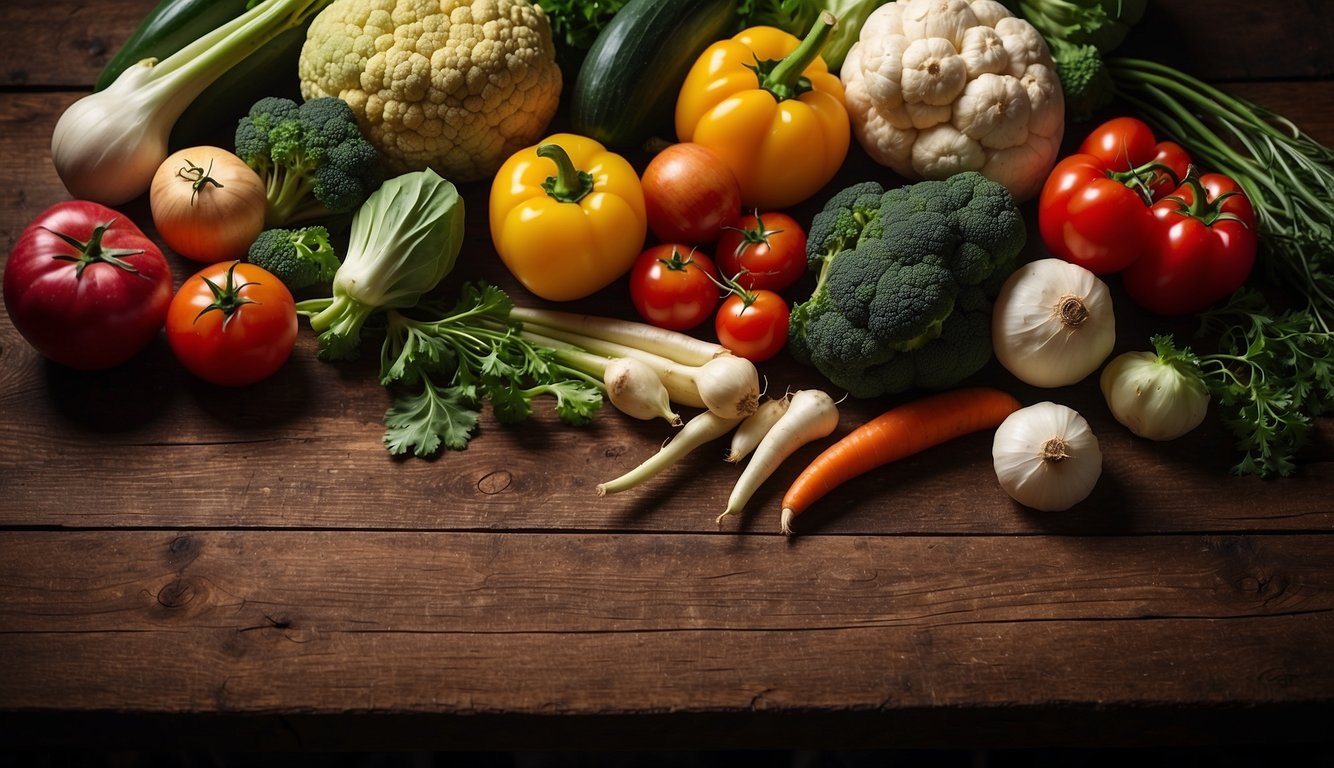
As a food enthusiast, I always try to experiment with new ingredients and create fusion dishes. Rare vegetables are no exception. Here are some innovative uses and recipes that you can try with the rare vegetables mentioned in the previous section.
Fusion Dishes and Culinary Experiments – Rare Vegetables List
One of my favorite ways to use rare vegetables is by adding them to fusion dishes. For example, you can create a delicious salad by combining roasted chestnuts with pickled celeriac and sliced kohlrabi. The combination of flavors and textures is simply amazing.
Another way to experiment with rare vegetables is by adding them to stir-fry dishes. For instance, you can create a stir-fry with jicama, watermelon radish, and snow peas. The sweetness of the jicama and watermelon radish pairs well with the crunchiness of the snow peas.
Traditional Recipes with a Twist
Rare vegetables can also be used in traditional recipes to add a unique twist. For example, you can create a mashed potato dish with celeriac instead of the regular potatoes. The celeriac adds a nutty and sweet flavor to the dish, making it more interesting.
Another way to use rare vegetables is by frying them. You can create a delicious fried snack by slicing kohlrabi thinly and frying it until crispy. The result is a crunchy and flavorful snack that is perfect for any occasion.
Finally, you can also use rare vegetables in soups. For instance, you can create a chestnut soup with celeriac and kohlrabi. The sweetness of the chestnuts and the nuttiness of the celeriac and kohlrabi create a delicious and comforting soup that is perfect for cold winter days.
Rare vegetables are not only nutritious but also versatile. By experimenting with them, you can create unique and delicious dishes that will impress your family and friends.
Visual Guide to Rare Vegetables List

Photographic Catalog of Exotic Varieties – Rare Vegetables List
As a gardener, I love growing rare vegetables that are not commonly found in grocery stores. I find it fascinating to see the variety of colors, shapes, and sizes that these vegetables come in. Here is a photographic catalog of some of the most exotic varieties of rare vegetables:
- Romanesco Broccoli: This vegetable is a cross between broccoli and cauliflower and has a unique fractal pattern that makes it a beautiful addition to any garden.
- Purple Carrots: These carrots are not only beautiful but also packed with nutrients. They come in shades of deep purple and have a slightly sweet flavor.
- Dragon Carrots: These carrots are a bright shade of orange and have a unique shape that resembles a dragon’s tail. They are sweet and juicy and perfect for snacking.
- Black Radish: This root vegetable is black on the outside and white on the inside. It has a spicy flavor and is perfect for adding to salads or pickling.
- Rainbow Swiss Chard: This leafy green vegetable is a colorful addition to any garden with its bright red, yellow, and green stems. It has a slightly bitter taste and is perfect for sautéing or adding to soups.
Identifying Features of Rare Vegetables
Rare vegetables come in all shapes, sizes, and colors. Here are some identifying features that can help you recognize these unique vegetables:
- Colors: Rare vegetables come in a variety of colors, from deep purple to bright orange and even black. These colors are not commonly found in traditional vegetables and make for a beautiful addition to any garden.
- Fractal: Some rare vegetables, like Romanesco broccoli, have a unique fractal pattern that makes them stand out from traditional vegetables.
- Shapes: Rare vegetables come in a variety of shapes, from dragon tail-shaped carrots to dipper gourds that can be cut and crafted to resemble a ladle.
- Edible Roots: Many rare vegetables have edible roots, like the black radish, which is black on the outside and white on the inside and has a spicy flavor.
- Greens: Rare vegetables also include a variety of leafy greens, like rainbow Swiss chard, which has bright red, yellow, and green stems and a slightly bitter taste.
- Stems: Some rare vegetables, like rainbow Swiss chard, have unique stems that come in a variety of colors and add a pop of color to any dish.
Growing rare vegetables is a fun and rewarding experience. With their unique colors, shapes, and flavors, they are sure to impress your friends and family and add a touch of exoticism to your garden.
Purchasing and Storage Tips – Rare Vegetables List
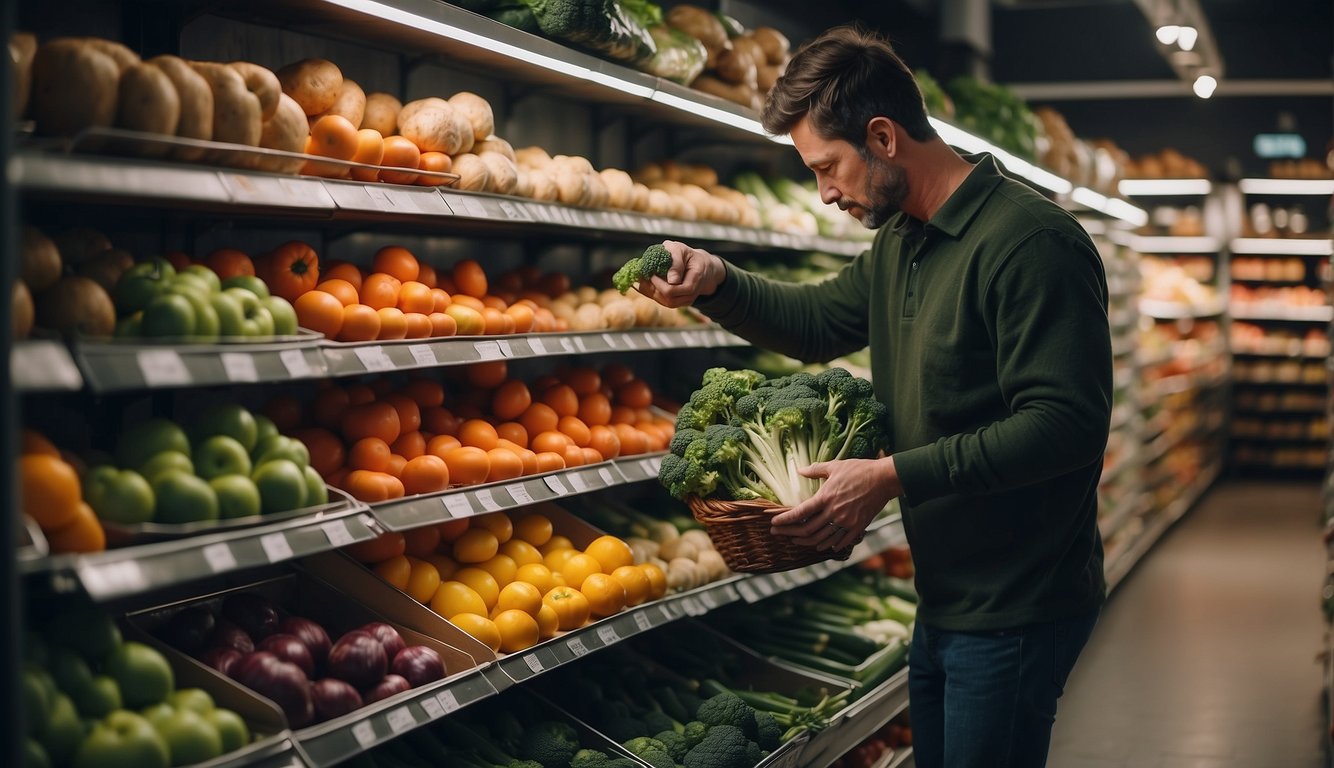
Where to Find Exotic Vegetables – Rare Vegetables List
When it comes to finding exotic vegetables like sunchokes, Jerusalem artichokes, nopales, or kohlrabi, it’s best to start with your local farmer’s market or specialty grocery store. These places often carry a wider variety of produce, making it easier to find rare vegetables. You can also try shopping online at specialty food websites or ordering from a local CSA (Community Supported Agriculture) program.
Best Practices for Storing Rare Produce
Once you’ve purchased your exotic vegetables, it’s important to store them properly to ensure they stay fresh and flavorful. Here are some best practices for storing rare produce:
- Store vegetables like sunchokes, Jerusalem artichokes, and kohlrabi in a cool, dry place away from direct sunlight. A root cellar or pantry is ideal.
- Nopales should be stored in the refrigerator in a plastic bag or container to prevent moisture loss.
- Carrots and turnips can be stored in the refrigerator in a plastic bag or container for up to two weeks.
- Broccoli, cauliflower, and cabbage should be stored in the refrigerator in a plastic bag or container for up to a week.
- Yuca (also known as manioc or cassava) should be stored in a cool, dry place away from direct sunlight. It can also be stored in the refrigerator for up to a week.
By following these storage tips, you can ensure that your rare vegetables stay fresh and delicious for as long as possible.
Glossary of Terms – Rare Vegetables List

Terminology Related to Rare Vegetables
When it comes to rare vegetables, there are a few terms that can be helpful to know. Here are some of the most common:
Veggies
Veggies are a term used to describe any edible part of a plant, including roots, stems, leaves, and flowers. When it comes to rare vegetables, there are many different types of veggies to explore. Some of the most popular include:
- Kohlrabi: A member of the cabbage family, kohlrabi has a mild, sweet flavor and can be eaten raw or cooked.
- Romanesco: A type of broccoli with a unique, spiral shape, romanesco is a great source of fiber and nutrients.
- Salsify: Also known as oyster plant, salsify has a subtle, nutty flavor and can be used in a variety of dishes.
Starch – Rare Vegetables List
Starch is a type of carbohydrate that is found in many different types of vegetables. When it comes to rare vegetables, some of the starchiest options include:
- Taro: A root vegetable that is commonly used in Asian cuisine, taro is high in fiber and has a starchy, potato-like texture.
- Yucca: Also known as cassava, yucca is a starchy root vegetable that is commonly used in Latin American and Caribbean cuisine.
- Jerusalem artichoke: Despite its name, Jerusalem artichoke is not actually an artichoke at all. Instead, it is a type of sunflower root that has a slightly sweet, nutty flavor and a starchy texture.
Fiber
Fiber is an important nutrient that can help promote healthy digestion and prevent a variety of health conditions. When it comes to rare vegetables, some of the best sources of fiber include:
- Burdock root: A type of root vegetable that is commonly used in Japanese cuisine, burdock root is high in fiber and has a slightly sweet, earthy flavor.
- Chayote: A type of squash that is commonly used in Latin American cuisine, chayote is a great source of fiber and has a mild, slightly sweet flavor.
- Lotus root: A type of root vegetable that is commonly used in Asian cuisine, lotus root is high in fiber and has a slightly crunchy texture.
Nutrients – Rare Vegetables List
In addition to fiber, rare vegetables are also a great source of a variety of other nutrients. Some of the most nutrient-dense options include:
- Watercress: A leafy green that is high in vitamins A, C, and K, as well as calcium and iron.
- Fiddleheads: The young shoots of the ostrich fern, fiddleheads are a great source of vitamins A and C, as well as iron and potassium.
- Sea beans: Also known as samphire, sea beans are a type of succulent that grow in saltwater marshes. They are high in vitamins A and C, as well as calcium and magnesium.
Carbohydrates
Many rare vegetables are also a great source of carbohydrates, which can provide energy and help fuel the body. Some of the best options include:
- Jicama: A type of root vegetable that is commonly used in Mexican cuisine, jicama has a slightly sweet, crunchy texture and is a great source of complex carbohydrates.
- Celeriac: Also known as celery root, celeriac is a type of root vegetable that is high in complex carbohydrates and has a slightly nutty flavor.
- Purple sweet potato: A type of sweet potato with a vibrant purple color, purple sweet potatoes are a great source of complex carbohydrates and antioxidants.
Rare Vegetables List and Their Interactions
Let’s delve into the fascinating world of rare vegetables and discover how they benefit each other.
Firstly, let’s shine a light on Romanesco broccoli and dill. These two make a great pair. Dill attracts beneficial insects that protect Romanesco broccoli from pests!
Next up, we have kohlrabi and thyme. Thyme is a fantastic companion for kohlrabi as it helps to deter cabbage worms. Isn’t that neat?
Ever heard of yardlong beans? They love being planted near corn. The corn stalks act as a natural trellis for the beans to climb on!
And let’s not forget about cucamelons and nasturtiums. Nasturtiums help to repel pests that would otherwise be attracted to cucamelons.
Remember, gardening is all about creating a harmonious ecosystem. So, let’s keep sowing, keep growing, and keep enjoying the wonders of our garden!
For more botanical insights, don’t forget to visit my homepage at theherbprof.com. Happy planting!
References – Unusual Vegetables
Little Herb Encyclopedia, by Jack Ritchason; N.D., Woodland Publishing Incorporated, 1995
The Ultimate Healing System, Course Manual, Copyright 1985, Don Lepore
Planetary Herbology, Michael Tierra, C.A., N.D., Lotus Press, 1988
Handbook of Medicinal Herbs, by James A. Duke, Pub. CRP Second Edition 2007
The Complete Medicinal Herbal, by Penelope Ody, Published by Dorling Kindersley
Check the Following Articles!
Can You Plant Garlic in the Spring? Tips and Guidelines
Unique Vegetables: Exploring Uncommon Varieties
Unusual Vegetables: A List of Unique & Flavorful Finds
Frequently Asked Questions – Rare Vegetables List

What are some examples of rare vegetables that can be found in the United States?
There are several rare vegetables that can be found in the United States, including celeriac, kohlrabi, and purple cauliflower. These vegetables are not commonly found in grocery stores but can be grown in home gardens or found at specialty markets.
Could you provide a list of exotic vegetables that are not commonly known?
Sure, here are some exotic vegetables that are not commonly known: oca, salsify, kohlrabi, and celeriac. These vegetables are not only tasty but also packed with nutrients and can be grown in home gardens.
Which unusual vegetables are suitable for home gardening?
Several unusual vegetables are suitable for home gardening, including kohlrabi, celeriac, and purple cauliflower. These vegetables are easy to grow and require minimal care. Other vegetables like salsify and oca require more attention and are best suited for experienced gardeners.
Can you name some exotic root vegetables that are lesser-known?
Yes, some exotic root vegetables that are lesser-known include crosnes, oca, and salsify. These vegetables have a unique taste and are packed with nutrients. They can be grown in home gardens and used in a variety of dishes.
What are some of the most unusual vegetables and fruits from around the world?
Some of the most unusual vegetables and fruits from around the world include durian, jackfruit, rambutan, and dragon fruit. These fruits are not only exotic but also packed with nutrients and have a unique taste.
What are some vegetables that were once popular but are now considered ‘forgotten’?
Some vegetables that were once popular but are now considered ‘forgotten’ include salsify, scorzonera, and skirret. These vegetables were commonly used in cooking in the past but have fallen out of favor in recent years. However, they are making a comeback and can be found in specialty markets and grown in home gardens.
